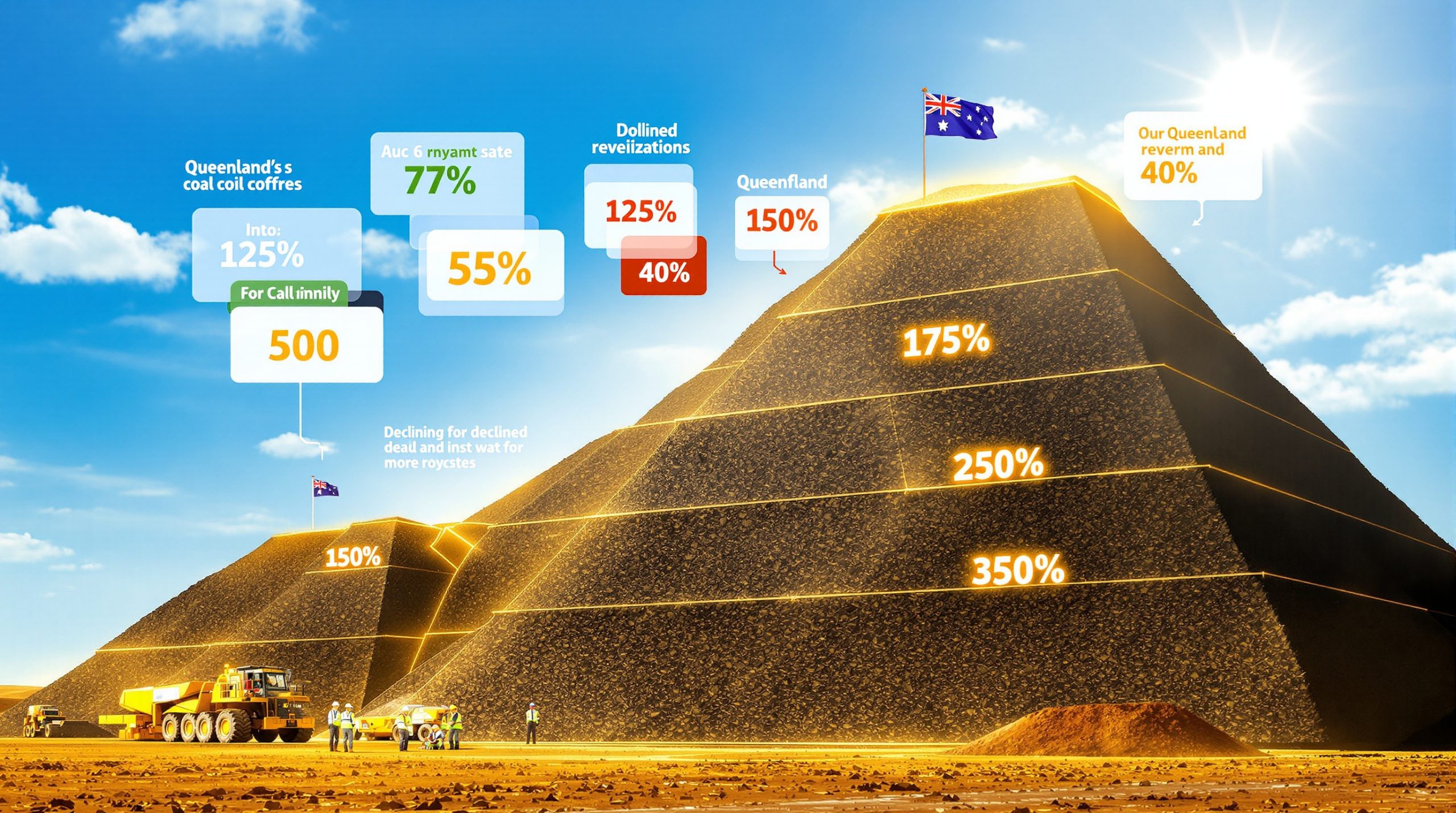Understanding the Coking Coal and Coke Market: Current Trends and Future Outlook
The coking coal and coke market is experiencing significant shifts as we move through 2025, with changing supply-demand dynamics creating both challenges and opportunities for industry participants. This comprehensive analysis examines current market conditions, pricing trends, and future outlook for this critical steel-making component.
What Is Happening in the Coking Coal and Coke Market?
The coking coal and coke market is currently in transition, moving into what industry analysts describe as the seasonal off-period. According to the latest Shanghai Metal Market (SMM) data from May 2025, we're witnessing a combination of peak pig iron production alongside medium-to-high coke inventory levels at steel mills across major production hubs.
"The market is beginning to transition into the off-season. Pig iron production has basically peaked, while the coke inventory at steel mills remains at medium-to-high levels," notes SMM's Daily Commentary from May 14, 2025.
This confluence of factors is building price pressure throughout the supply chain, with industry experts anticipating the first round of price reductions to materialize shortly. Despite these warning signals, coking enterprises continue to maintain high production levels even as shipment pace slows – creating a potentially precarious balance in the market.
Current Market Dynamics
The current market situation reflects a classic supply-demand imbalance beginning to form. While pig iron production has reached its seasonal peak, coke stockpiles at steel mills remain relatively abundant. This combination has reduced purchasing urgency among steel producers, many of whom are now implementing or planning blast furnace maintenance operations.
Coking enterprises, meanwhile, continue operating at high capacity utilization rates, motivated by moderate profit margins that still justify production despite weakening demand signals. This production enthusiasm, coupled with slowing shipment rates, is creating inventory buildup risks that further pressure the market.
Key Price Indicators (May 2025)
Current pricing data from SMM reveals significant variations based on product quality, processing method, and geographic location:
| Product Type | Processing Method | Price (yuan/mt) | Notes |
|---|---|---|---|
| First-grade metallurgical coke | Dry quenching | 1,680 | National average |
| Quasi-first-grade metallurgical coke | Dry quenching | 1,540 | National average |
| First-grade metallurgical coke | Wet quenching | 1,340 | National average |
| Quasi-first-grade metallurgical coke | Wet quenching | 1,250 | National average |
| Low-sulphur coking coal | N/A | 1,270 | Linfen region |
| Low-sulphur coking coal | N/A | 1,370 | Tangshan region |
The significant price premium for dry-quenched coke (approximately 340 yuan/mt for first-grade products) highlights the market's valuation of energy efficiency and quality preservation. Dry quenching technology recovers heat during the cooling process, reducing carbon emissions while maintaining superior coke quality – benefits that command substantial market premiums.
Why Is the Coking Coal Market Facing Downward Pressure?
The coking coal market is encountering increasing downward price pressure driven by a combination of supply resilience and weakening seasonal demand. According to SMM data from May 2025, approximately 70% of online coking coal auctions showed price declines, a telling indicator of market sentiment.
Supply-Side Factors
Coal mines across major production regions continue to maintain normal production operations, creating a steady flow of raw material into the market. This consistent supply meets increasingly hesitant demand, resulting in what SMM describes as "average transaction performance with inventory accumulation risks."
Several mining operations report poor subsequent order books, signaling reduced forward buying interest. This lack of future commitments has already triggered price pullbacks at certain operations, particularly in regions like Linfen where prices have settled at 1,270 yuan/mt for low-sulphur coking coal.
The online auction market provides perhaps the clearest indicator of current pricing trends, with SMM reporting that price declines significantly outnumber increases in recent sessions. This pattern typically serves as a leading indicator for broader market movements.
"Coking coal prices will continue to face downward pressure due to inventory buildup risks and poor subsequent orders," reports SMM in its May 14, 2025 market commentary.
Demand-Side Challenges
The demand picture presents multiple headwinds for the coking coal and coke market:
- Seasonal transition: The market is entering its traditional off-season period
- Maintenance operations: Blast furnace maintenance activities are gradually increasing
- Purchasing strategy shifts: Steel mills are adopting "as-needed" buying approaches
- Inventory management: Existing medium-to-high inventory levels reduce restocking enthusiasm
These factors collectively dampen purchasing momentum, creating a market environment where buyers can exercise patience and pricing leverage. With sufficient stockpiles already secured, steel mills face little pressure to accept higher prices or commit to large forward purchases.
How Are Production and Inventory Levels Affecting the Market?
The relationship between production rates and inventory levels provides critical insights into market direction. Current data shows potential imbalances forming that could further pressure prices in the near term.
Production Dynamics
Coking enterprises continue to operate with what SMM describes as "moderate profit margins" – sufficient to maintain production enthusiasm but not generous enough to drive capacity expansion. This profit level has kept supply robust despite weakening demand signals.
Key production factors include:
- Capacity utilization: Remains elevated across major coking enterprises
- Production enthusiasm: Continues to run high despite market warning signs
- Supply robustness: Output levels remain strong relative to current demand
This production momentum creates a potential oversupply scenario as the market moves deeper into the seasonal lull. Unless coking enterprises proactively reduce output in response to weakening demand signals, inventory pressures could intensify.
Inventory Pressures
Inventory levels are building throughout the supply chain, creating potential price vulnerabilities:
- Coking facilities: Experiencing inventory buildup as shipment pace slows
- Steel mills: Maintaining medium-to-high coke inventory levels
- Purchasing urgency: Reduced due to sufficient stockpiles
- Short-term risk: Increasing possibility of oversupply conditions
The combination of slowing shipments and maintained production creates a mathematical certainty – rising inventories at production points. Meanwhile, steel mills' comfortable inventory positions remove any urgency from their purchasing decisions, allowing them to take a more selective and price-sensitive approach to the market.
"With coke inventory at steel mills remaining at medium-to-high levels and blast furnace maintenance operations gradually increasing, steel mills are purchasing on an as-needed basis with reduced restocking enthusiasm," notes SMM in its market analysis.
What Are the Regional Price Variations in the Market?
The coking coal and coke market exhibits significant regional price differentials, reflecting local supply-demand balances, transportation infrastructure, and proximity to major steel production hubs.
Geographic Price Differentials
One of the most notable regional price variations is the 100 yuan/mt spread between low-sulphur coking coal prices in Linfen (1,270 yuan/mt) and Tangshan (1,370 yuan/mt). This substantial difference underscores the importance of location in coking coal valuations.
Several factors contribute to these regional variations:
- Proximity to steel production: Tangshan's higher prices reflect its position near major steelmaking facilities
- Transportation infrastructure: Logistical constraints and shipping costs create regional price deltas
- Local supply-demand dynamics: Region-specific production capacity and consumption rates influence pricing
- Quality variations: Subtle differences in coal properties can affect regional valuations
These regional differentials create opportunities for arbitrage and strategic sourcing for market participants with sufficient logistical capabilities. However, transportation costs often limit the economic viability of moving material between regions solely for price advantage.
Processing Method Price Variations
Beyond geographic differences, processing technologies create substantial price variations for finished coke products:
| Processing Method | Price Premium (First-Grade) | Key Advantages |
|---|---|---|
| Dry Quenching | +340 yuan/mt | Higher energy efficiency, better coke quality, reduced emissions |
| Wet Quenching | Baseline | Lower capital costs, simpler operation |
The significant price premium for dry-quenched coke reflects its superior quality attributes and environmental benefits. Dry quenching technology recovers heat during the cooling process, improving energy efficiency while producing stronger coke with more consistent properties – characteristics particularly valued in high-performance blast furnace operations.
Quality grade also significantly impacts pricing, with first-grade materials commanding premiums over quasi-first-grade products (approximately 140 yuan/mt for dry-quenched coke and 90 yuan/mt for wet-quenched products). These differentials reflect performance differences in steel production applications, particularly regarding strength and reactivity profiles.
What's the Short-Term Outlook for the Coking Coal and Coke Market?
Industry analysts anticipate continued softness in the coking coal and coke market over the coming weeks as seasonal factors weigh on demand. According to SMM projections, the market may experience what they describe as "doldrums in the short term," with the first round of price reductions expected to materialize as demand weakens further.
Market Forecast Indicators
Several key indicators point toward continued market challenges:
- Seasonal patterns: The traditional off-season is just beginning
- Price reduction expectations: Initial price cuts anticipated imminently
- Maintenance schedules: Blast furnace maintenance activities increasing
- Inventory levels: Sufficient stockpiles reducing purchasing urgency
These factors collectively suggest limited upside potential in the near term, with risks skewed toward further price weakness as the market adjusts to seasonal demand patterns and inventory positions.
"The coke market may be in the doldrums in the short term, and the first round of price cuts is expected to be implemented," SMM noted in its May 14 market commentary.
Factors to Monitor
Market participants should closely track several key variables that could influence near-term market direction:
- Blast furnace operations: The pace and scope of maintenance schedules
- Steel production rates: Any unexpected changes in output levels
- Purchasing behavior: Shifts in steel mill buying strategies
- Inventory trajectories: Changes in stockpile levels at both production and consumption points
- Policy developments: Government actions affecting production quotas or environmental restrictions
Of particular importance will be steel mills' purchasing strategies. Any shift from the current "as-needed" approach to more aggressive restocking would signal changing market sentiment. Similarly, production curtailments at coking facilities would indicate recognition of oversupply risks and could help stabilize prices.
FAQs About the Coking Coal and Coke Market
What is driving the current price pressure in the coking coal market?
The current price pressure stems from a combination of factors: normal production levels at mines, average transaction performance, and poor subsequent orders, all creating inventory buildup risks. Online auction data from SMM shows approximately 70% of recent auctions resulting in price declines, reflecting prevailing market sentiment. This combination of steady supply and weakening demand creates natural downward price pressure.
How are steel mills responding to current market conditions?
Steel mills are demonstrating increasing caution in their purchasing strategies. With medium-to-high inventory levels already in place and the approaching off-season period, mills are adopting primarily "as-needed" buying approaches. Many facilities are also implementing or planning blast furnace maintenance operations, further reducing their immediate coke requirements. This combination of comfortable inventories and reduced operational needs allows steel producers to exercise patience and price discipline in their purchasing activities.
What is the relationship between pig iron production and coke demand?
Pig iron production serves as a direct driver of coke consumption, with each ton of pig iron requiring approximately 0.3-0.4 tons of coke in modern blast furnace operations. According to SMM analysis, pig iron production has essentially reached its peak for this cycle, which typically signals a plateau or potential decline in coke demand. When combined with existing high inventory levels at steel mills, this production peak removes a key growth driver from the coke market.
What's the difference between dry quenching and wet quenching coke?
The distinction between dry and wet quenching involves both process technology and product characteristics:
| Feature | Dry Quenching | Wet Quenching |
|---|---|---|
| Cooling method | Inert gas circulation | Water spray/immersion |
| Energy recovery | Yes (heat recovery) | No (heat lost) |
| Environmental impact | Lower emissions | Higher water usage, steam emissions |
| Coke quality | Superior strength, more uniform | More variable, potential water content |
| Price premium | Approximately 340 yuan/mt | Baseline price |
Dry quenching's significant price premium (around 340 yuan/mt for first-grade coke) reflects its superior energy efficiency, environmental performance, and product quality. The process preserves coke strength while allowing heat energy recovery, making it increasingly preferred for modern, efficiency-focused steel operations.
How might seasonal factors affect the market in coming months?
Seasonal patterns play a significant role in the coking coal and coke market. As the industry enters its traditional off-season period, several seasonal factors will likely influence market dynamics:
- Reduced steel production: Scheduled maintenance activities typically increase during this period
- Weather considerations: Seasonal factors affecting both production and transportation logistics
- Inventory management: Year-end inventory targets influencing purchasing decisions
- Planning cycles: Budget and production planning for the coming year affecting current decisions
These seasonal patterns typically weaken coke demand during this period, potentially extending price pressure through the remainder of the season. However, unexpected weather events or policy changes could disrupt these typical seasonal patterns.
Disclaimer: This market analysis contains forward-looking statements based on current information and industry expertise. Actual market developments may differ from projections due to unforeseen events, policy changes, or other factors. This information is provided for educational purposes only and should not be considered investment advice.
Additional Market Considerations
Quality Specifications Impact on Pricing
Beyond the broad categories outlined above, specific quality parameters significantly influence coking coal and coke pricing:
- Sulfur content: Lower sulfur commands premiums due to environmental regulations and steel quality requirements
- Ash percentage: Lower ash content generally correlates with higher pricing
- Volatile matter: Optimal ranges command price premiums
- CSR (Coke Strength after Reaction): Higher values typically warrant significant price premiums
These quality differentials can create substantial price variations even within the same regional market, with premium low-sulfur, low-ash materials commanding significantly higher valuations than standard products.
Environmental Regulations and Market Impacts
Environmental policies continue to exert growing influence on the coking coal and coke market. Production restrictions tied to emissions targets or air quality concerns can create temporary supply constraints that counterbalance weakening demand signals. Market participants should monitor policy developments closely, as unexpected regulatory actions could quickly alter market dynamics despite current oversupply signals.
Transportation Infrastructure Considerations
Logistics networks play a crucial role in regional price formation. Areas with limited transportation infrastructure often experience more volatile pricing as supply disruptions cannot be easily mitigated through alternative sourcing. Rail capacity constraints, port congestion, or trucking limitations can all create temporary regional price distortions that may present opportunities for well-positioned market participants.
Understanding these additional factors provides market participants with a more complete framework for anticipating price movements and positioning their operations accordingly in this evolving market volatility hedging landscape. Furthermore, staying informed about global iron ore trends and iron ore forecast can provide valuable context for coal market participants, as both commodities are essential inputs for steel production.
The coking coal and coke market is also being shaped by broader mining evolution trends, including automation, digitalization, and sustainability initiatives. Additionally, increasing international trade tensions and tariffs impact market dynamics by potentially altering traditional trade flows and creating new opportunities or challenges for market participants.
Want to Catch the Next Major Mining Discovery Before the Market?
Discovery Alert's proprietary Discovery IQ model instantly notifies investors about significant ASX mineral discoveries, giving you a crucial edge in the commodities market. Visit our discoveries page to see how early detection of companies like De Grey Mining and WA1 Resources could have transformed your portfolio.




